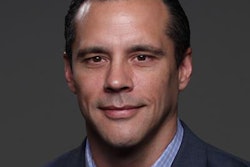
The percentage of dentists and dental offices affiliated with private equity firms approximately doubled between 2015 and 2021, indicating investor companies' growing interest in dentistry. The study recently was published in Health Affairs.
However, the surge in private equity transactions was even higher among specialties, including orthodontists, oral surgeons, and endodontists, the authors wrote.
"PE (private equity) investment in dental practices accelerated, particularly among dental specialists," wrote the authors, led by Marko Vujicic, PhD, the chief economist and vice president of the ADA's Health Policy Institute (Health Aff, August 5, 2024).
Over the last two decades, PE has played a role in acquiring healthcare facilities, including medical practices and hospitals. In recent years, investment firms have taken more of an interest in acquiring dental practices. Despite this growth, there is little data available about the scope of PE transactions within the dental sector, according to the study.
To explore PE activity in dentistry, dentist provider data from the ADA Masterfile, which includes about 200,000 active dental providers in the U.S., for the period between 2015 and 2021, were reviewed. Also, transaction data from other data platforms were used for the analysis.
Between 2004 and 2015, PE dental transactions were low at about 20 per year. In 2016, the number of transactions substantially increased, reaching 62 in 2019 before dipping to 46 in 2020. The number of transactions jumped back up in 2021 to 96, the authors wrote.
Additionally, the percentage of dentists and offices affiliated with PE firms increased twofold from nearly 7% in 2015 to almost 13% in 2021. Furthermore, the percentage of dental offices affiliated with PE more than doubled, from about 2% in 2015 to almost 5% in 2021, they wrote.
Also, the percentage of PE-affiliated clinicians soared for both general practice dentists and specialists. In 2015, about 7% of general practice dentists were affiliated with equity firms, and that percentage grew 87% to almost 13% in 2021. Although significant, the increase was greater among dental specialists, the authors wrote.
The study had several limitations, including that a PE firm does not have to publicize its acquisition of a dental practice, which may have led to an underestimation of the number of dentists affiliated with investment firms, they wrote.
In the future, studies should explore whether PE's role in the dental sector affects the quality and affordability of dental care, the authors wrote.
"As PE firms acquire additional dental practices and potentially increase consolidation, future research should examine the effect that these acquisitions have on prices for dental procedures, procedure mix, dentists' participation in Medicaid, and quality of care," Vujicic and colleagues wrote.




















